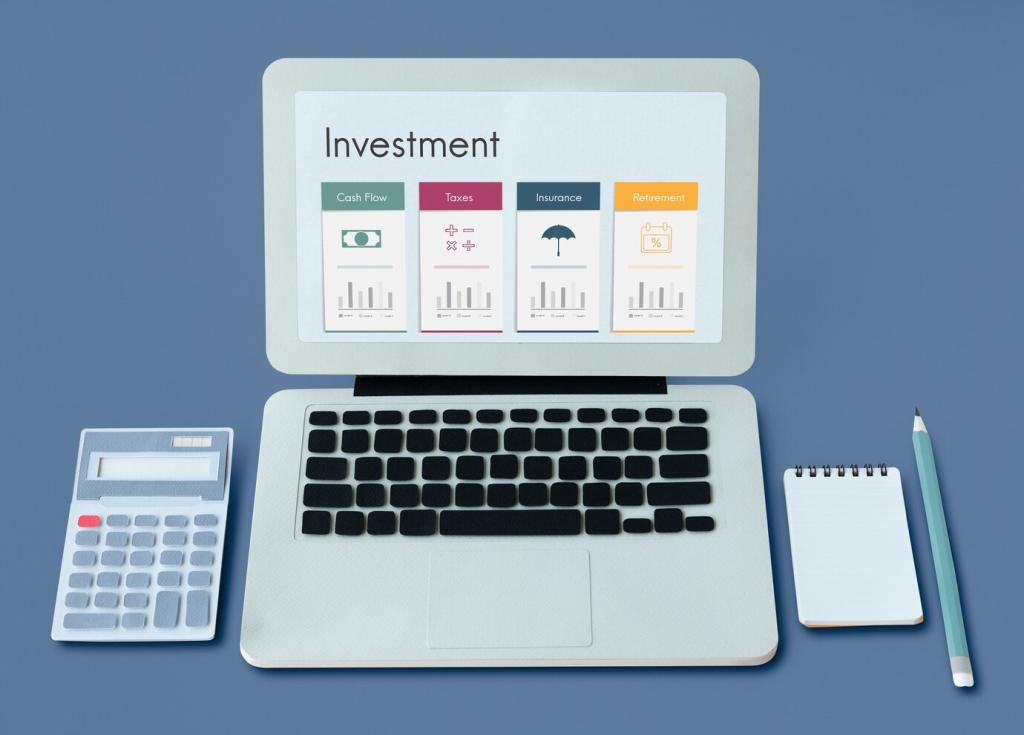Fintech Innovations Reshaping Corporate Finance
Chosen theme: Fintech Innovations Reshaping Corporate Finance. Welcome to a front-row view of how APIs, real-time payments, automation, and data intelligence are rewriting the corporate finance playbook—from treasury through FP&A to risk, with practical stories and actionable ideas you can use today.

Why This Wave of Fintech Matters to Corporate Finance Now
From Batch to Real Time
Corporate finance long relied on nightly batches and month-end true-ups. Fintech brings live bank feeds, instant reconciliation, and alerts that surface risks as they emerge, not after. The payoff is faster decisions, tighter controls, and fewer last-minute surprises.
The CFO as Platform Orchestrator
With modular fintech, the CFO curates a connected stack rather than one monolith. Best-in-class tools for treasury, payables, receivables, and planning work through APIs, enabling faster deployments, lower vendor lock-in, and a culture of experimentation that compounds advantages.
A Quick Story from the Month-End Close
A mid-market manufacturer used API bank connections and automated matching to move from ten-day closes to four. The team stopped firefighting spreadsheets, focused on variance narratives, and caught a pricing leak that funded a new product line. Share your own close wins or frustrations.
Treasury Transformation: Cash Visibility, Liquidity, and Real-Time Payments
Instead of SFTP files and manual key rotations, treasury APIs provide authenticated, audited access to balances, statements, and payment initiation. Teams monitor connections in dashboards, minimize failures, and standardize workflows globally without waiting for overnight file drops.
Treasury Transformation: Cash Visibility, Liquidity, and Real-Time Payments
Instant rails bring confirmation within seconds, while ISO 20022’s richer data rides along. Combined, they simplify reconciliation, reduce inquiries, and unlock precise cash positioning. Early adopters report improved supplier trust and fewer working capital buffers tied up in uncertainty.



Dynamic Discounting with Shared Wins
Buyers deploy dynamic discounting platforms to pay early when cash is abundant, earning attractive risk-adjusted returns while suppliers gain predictable cash flow. Transparent rates and clear terms elevate trust, especially when paired with automated remittance data for instant clarity.
B2B Buy Now, Pay Later, Responsibly
B2B BNPL can unlock sales and smooth buyer cash cycles. The key is disciplined underwriting, clear dispute workflows, and data-driven credit limits. Used wisely, it augments—not replaces—traditional lines, while keeping Days Sales Outstanding trending in the right direction.
Embedded Finance Inside Enterprise Platforms
ERP and procurement tools now natively offer financing, payments, and insurance. Finance teams configure policy guardrails, while business users click-to-activate. This reduces swivel-chair operations and ensures controls travel with transactions, wherever they originate in the enterprise workflow.
Data and Automation for FP&A: From Static Budgets to Continuous Planning
Fintech-enabled FP&A platforms update forecasts as sales orders close, marketing launches campaigns, or supply chains flex. Finance becomes an insight partner, shifting from reconciling inputs to advising on trade-offs with timely, scenario-ready views that leadership can trust.
Data and Automation for FP&A: From Static Budgets to Continuous Planning
Data pipelines pull from ERP, CRM, HR, and bank APIs into governed models. Definitions are standardized, lineage is visible, and outliers trigger alerts. When teams believe the numbers, meetings move from debating figures to deciding actions, accelerating execution across functions.


Risk, Compliance, and Security in a Fintech-Enabled Finance Function
RegTech That Documents Itself
Policy changes, approvals, and exceptions are logged automatically. Instead of assembling binders, teams export evidence with clear timestamps and context. This reduces audit fatigue and strengthens the control environment while preserving the agility that makes fintech valuable in the first place.
Zero-Trust Security for Sensitive Finance Data
Role-based access, encryption, and step-up authentication protect payments and payroll. Tokenization reduces exposure, while behavioral analytics catch anomalies early. Security becomes a design principle, not a bolt-on, ensuring speed never sacrifices the integrity stakeholders demand.
Controls That Keep Pace with Change
As new apps join the stack, automated control checks verify segregation of duties, payment limits, and approval paths. When exceptions occur, workflows route reviews quickly, preserving momentum while preventing policy drift across fast-moving teams and international subsidiaries.
Blockchain, Tokenization, and Smart Contracts for Corporates
On-Chain Settlement Pilots with Real Benefits
Some corporates test tokenized deposits or on-chain records for intercompany flows. The attraction is faster settlement finality, continuous audit trails, and reduced reconciliation. Early trials focus on low-risk volumes, gathering evidence before broader adoption decisions are made.
Programmable Escrow and Milestone Payments
Smart contracts can release funds upon verified events, reducing disputes and manual oversight. When linked to trusted data sources, they turn contractual terms into executable code, tightening working capital cycles and creating transparency both sides can confidently operate within.
Stablecoins and Treasury Considerations
Where policy permits, stablecoins may offer faster, lower-cost transfers. Treasury must assess counterparty risk, regulation, and accounting treatment. Clear playbooks, limits, and automated monitoring help ensure experiments are controlled, auditable, and aligned with enterprise risk appetite.


Multi-Currency Wallets and Local Schemes
Virtual accounts and local rails reduce lift times and fees. Finance teams receive local references, richer remittance data, and improved posting accuracy. This makes cross-border operations feel domestic, enhancing customer experience and accelerating cash conversion cycles in new markets.

Data-Driven Hedging Strategies
Fintech tools combine order pipelines, historical volatility, and scenario tests to propose right-sized hedges. Instead of blanket coverage, treasurers tailor instruments to exposures, balancing protection and cost while communicating rationale in clear dashboards the board quickly understands.

A Supplier Retention Win via Instant Settlement
A distributor shifted urgent payouts to instant rails during a seasonal crunch, stabilizing a critical supplier relationship. The cost was modest compared with a disruption, and the gesture earned priority allocation for the entire peak period.
